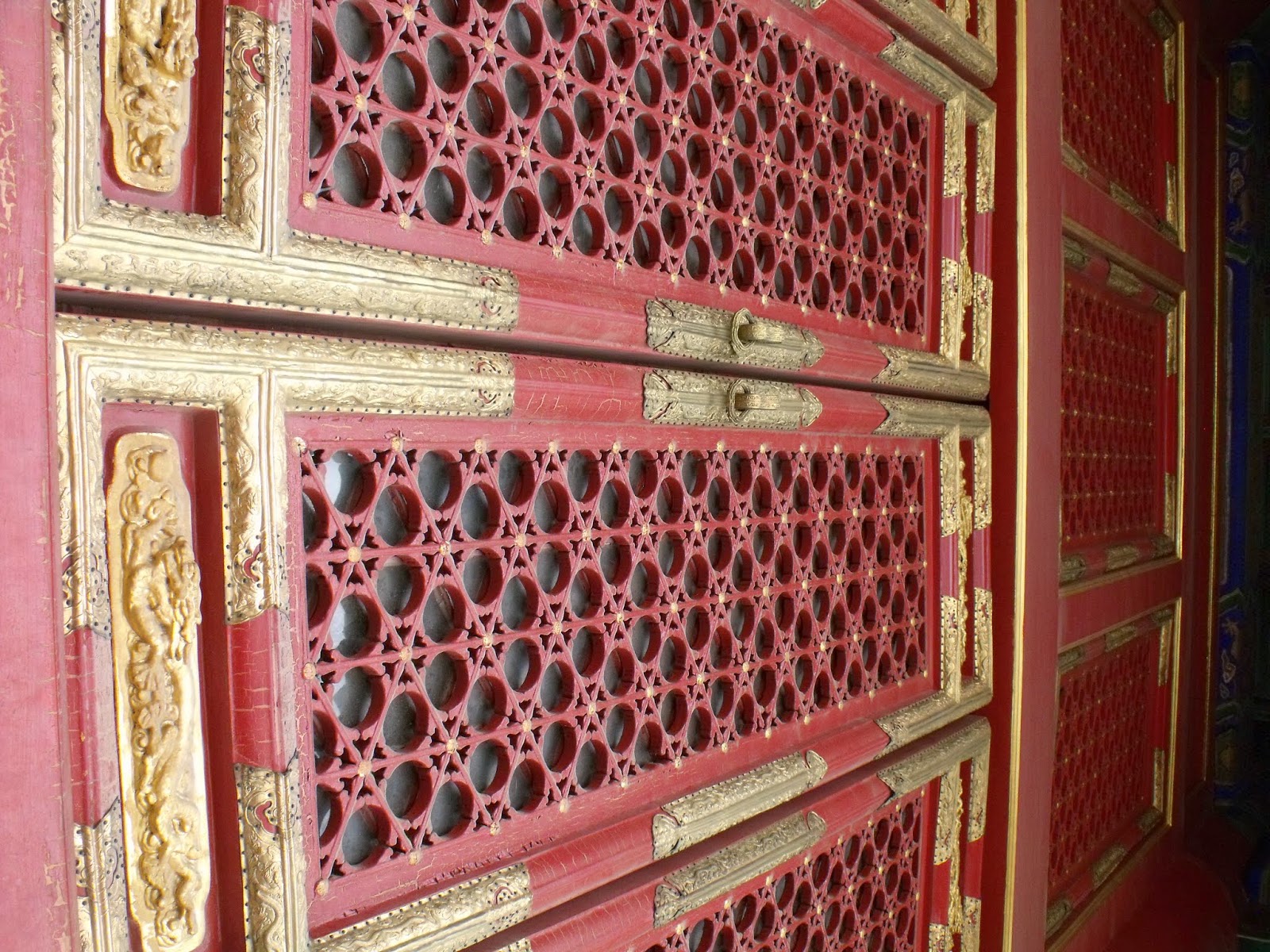There are two things I've associated with Chinese history for many years. The first, of course, is the Great Wall. The second is the Forbidden City.
But I didn't realize just how big this thing was. I thought, really, that it was just a humongous courtyard surrounded by about four buildings, each connected to its neighbor by a high wall.
I didn't know it would be this high.
I didn't know that it would have a moat around it.
And I didn't know that the outer wall surrounded several courtyards.
The Meridian Gate (see picture) was impressive enough, bigger than I'd imagined. It also looked more Chinese than I ever thought authentic Chinese architecture would really look.
See, I've seen examples of Mexican restaurants that are pretty well overdone. Think "Cinco de Mayo" (which is in fact a pretty minor Mexican holiday, on the order of Flag Day here). So I figured the most, what I'd call garish, Chinese restaurants I've seen in the U.S. were similarly exaggerated.
Nope. To wit:
The different rooflines really fascinated my friend. I was struck by the ubiquity of bright reds, blues, yellows and greens. The traditional Chinese aesthetic is so different from what I'm used to. So is the modern Chinese aesthetic of architecture, but that fascinated me to no end. (More on that later.)
And the distinct Chinese aesthetic extended even to the names of the buildings. The Gate of Supreme Harmony. The Hall of Preserving Harmony. The Gate of Divine Powers. The Hall of Earthly Tranquility.
The Forbidden City was the oldest thing I'd ever seen to that point. I never realized before how weird old things are, and how much the passage of time and the descent of generations can change things and at the same time leave some aspects untouched. And it's a little strange to think that some emperor had lived in these palaces years and years and years before I was walking around, snapping pictures of his house.
But I didn't realize just how big this thing was. I thought, really, that it was just a humongous courtyard surrounded by about four buildings, each connected to its neighbor by a high wall.
I didn't know it would be this high.
I didn't know that it would have a moat around it.
And I didn't know that the outer wall surrounded several courtyards.
The Meridian Gate (see picture) was impressive enough, bigger than I'd imagined. It also looked more Chinese than I ever thought authentic Chinese architecture would really look.
See, I've seen examples of Mexican restaurants that are pretty well overdone. Think "Cinco de Mayo" (which is in fact a pretty minor Mexican holiday, on the order of Flag Day here). So I figured the most, what I'd call garish, Chinese restaurants I've seen in the U.S. were similarly exaggerated.
Nope. To wit:
The different rooflines really fascinated my friend. I was struck by the ubiquity of bright reds, blues, yellows and greens. The traditional Chinese aesthetic is so different from what I'm used to. So is the modern Chinese aesthetic of architecture, but that fascinated me to no end. (More on that later.)
And the distinct Chinese aesthetic extended even to the names of the buildings. The Gate of Supreme Harmony. The Hall of Preserving Harmony. The Gate of Divine Powers. The Hall of Earthly Tranquility.
 |
| The Hill of Accumulated Elegance. |
The Forbidden City was the oldest thing I'd ever seen to that point. I never realized before how weird old things are, and how much the passage of time and the descent of generations can change things and at the same time leave some aspects untouched. And it's a little strange to think that some emperor had lived in these palaces years and years and years before I was walking around, snapping pictures of his house.












Comments